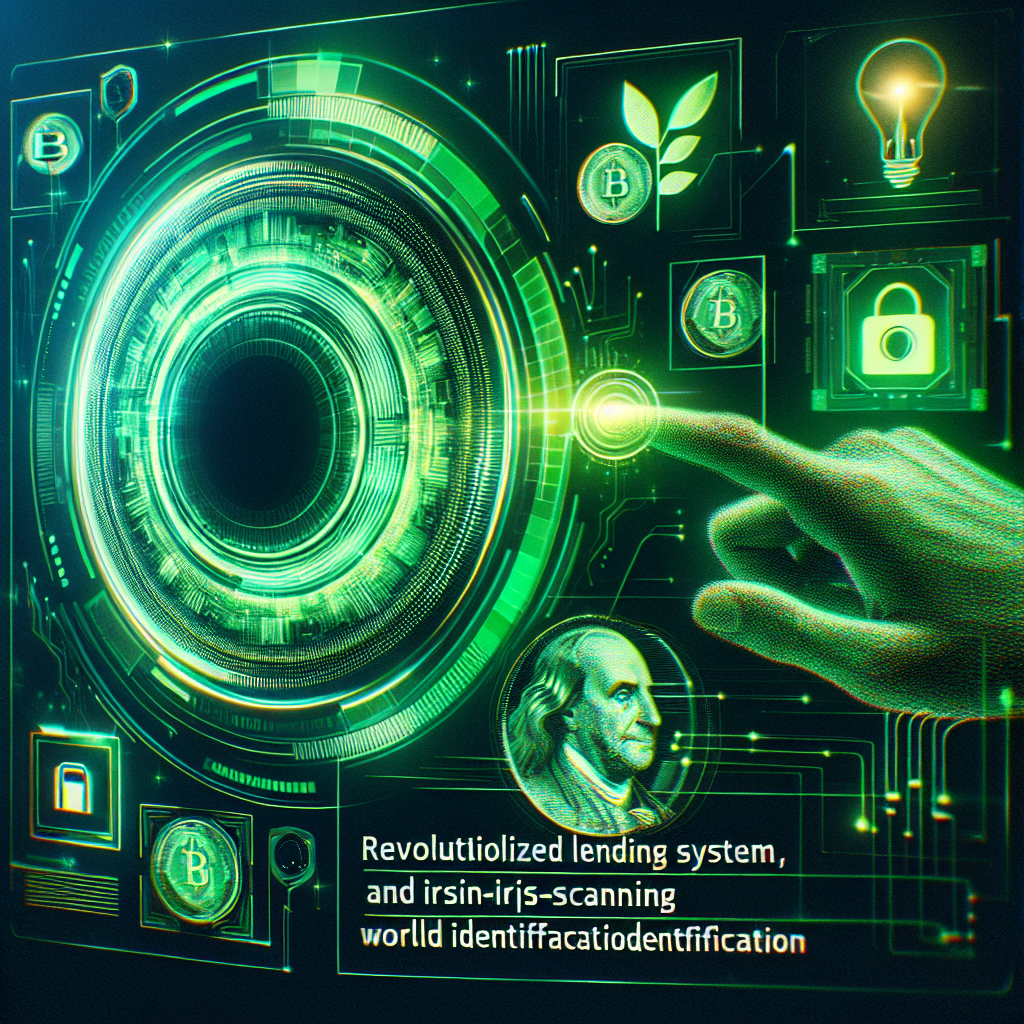In a groundbreaking move that could reshape the lending landscape, San Francisco-based Divine Research is rolling out thousands of unsecured loans worldwide, using biometric technology to verify identities. Instead of relying on traditional IDs, Divine’s innovative approach utilizes a unique method: a simple scan of the borrower’s iris. This strategy not only simplifies the verification process but also aims to grant financial access to underserved communities across the globe.
According to a recent report by the Financial Times, Divine has managed to issue around 30,000 short-term loans since December. Most of these loans, typically under $1,000, are dispensed in USDC, a widely-used stablecoin issued by Circle that is pegged to the US dollar. By catering to individuals who often find themselves on the fringes of the banking system—think high-school teachers, street vendors, and other everyday people—Divine is positioning itself as a leader in a new wave of lending solutions. “We’re loaning to average folks like high-school teachers, fruit vendors… basically anyone with access to the internet,” noted Diego Estevez, the founder of Divine. He likened their initiative to “microfinance on steroids.”
Crypto lenders dial up risk with ‘microfinance on steroids’ https://t.co/6GgzJZROtm— Financial Times (@FT) July 27, 2025
As Divine tests its lending model amid the economic challenges facing countries like Argentina, the unique process includes each borrower scanning their iris through a specialized World ID orb for identity verification. This system is designed to minimize defaults by preventing individuals from obtaining multiple loans under different identities. Despite these precautions, Estevez is candid about the challenges, admitting that default rates for first-time borrowers hover around 40%. To mitigate these risks, Divine has set fixed interest rates between 20% to 30% and offers reclaimable Worldcoin tokens for depositors.
Divine’s pilot program in Argentina is particularly relevant given the country’s persistent inflation issues, making access to stable dollar-denominated credit increasingly appealing. Interestingly, many of Divine’s borrowers have little to no prior experience with cryptocurrencies, indicating a significant opportunity for education and onboarding in the crypto space. Estevez explained that liquidity is supplied by individual depositors, many of whom are enticed by the high yields. “We’ve engineered the system such that after accounting for default rates and the [interest] rates on offer, providers will always make a profit,” he said.
The emergence of Divine is notable as it marks a resurgence in unsecured crypto lending, a sector that faced significant turmoil following the 2022 market crash. During that time, well-known platforms like Celsius and Genesis collapsed under the weight of massive defaults triggered by falling token prices, leading to many retail investors losing their deposits. Notably, Celsius CEO Alex Mashinsky received a prison sentence of 12 years, and Genesis was ordered to pay a hefty $2 billion settlement due to fraud allegations.
However, Divine isn’t alone in exploring this space. Competing platforms like 3Jane, supported by the venture firm Paradigm, are also making headlines by issuing unsecured USDC loans on the Ethereum blockchain without requiring collateral. They do, however, demand proof of bank or crypto assets for eligibility and manage defaulted loans through US debt collectors. Furthermore, 3Jane is developing innovative AI-powered agents aimed at automating the management of debt terms, a feature that could significantly lower risk for lenders.
While still considered a niche within the multi-billion-dollar crypto lending sector, unsecured loans are drawing increased attention from investors. Major players, including Coinbase and Tether, continue to dominate the collateralized lending market, but there is a cautious interest from traditional finance entities as well. Investment firms such as Cantor Fitzgerald are dipping their toes into the crypto lending ecosystem by launching bitcoin-backed financing arms.
At the heart of Divine’s strategy is its pioneering use of biometric verification combined with a laser focus on small-scale global borrowers. The company is banking on the effectiveness of eye scans, high interest rates, and appeal for yield-hungry depositors to make unsecured crypto loans a viable option, even in a market still mired in the shadows of its past. As the landscape evolves, it remains to be seen whether Divine’s bold experiment will thrive or falter, but one thing is clear: the future of crypto lending is being written today.
As we watch these developments unfold, it’s crucial for potential borrowers and investors alike to stay informed about the impacts of unsecured loans in the crypto space. Will this new approach lead to greater financial inclusion, or are there risks that could undermine its success? The coming months may hold the answers as more participants enter this dynamic arena.
